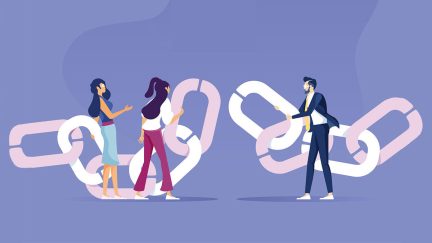Never miss a story — sign up for PLANSPONSOR newsletters to keep up on the latest retirement plan benefits news.
Preparing for the Multigenerational Workforce
As younger workers start their careers, employers may need to reorganize benefits to appeal to a wider net of employees.
As graduating students enter the workforce, more are expressing an interest in health care careers.
New data from Edweek, a news organization that covers K-12 education, found that 55% of teachers say they have seen more students express an interest in health care careers since the beginning of the coronavirus pandemic. For health care employers, this creates a new challenge of younger workers entering the workforce, which means plan sponsors need to address each generation’s separate financial considerations and provide benefits that best suit their needs, says Colin Pierce, managing director and head of health care practice at TIAA.
A TIAA study found that, in any field, a multidimensional workforce comes with vastly different engagement levels, savings goals and investment styles.
“Taking a one-size-fits-all approach to engaging that workforce is not going to work in a lot of cases,” Pierce says. “If you’re communicating the same way to someone who lacks in financial literacy and someone who is much more in tune with his finances, you’re going to lose someone in the middle.”
Even for younger clients who understand the intricacies of employer matches, vesting schedules, open enrollment and student loan debt repayment options, members of this generation require different benefits than their Generation X and Baby Boomer colleagues. A Pew Research Center survey conducted last April noted that the generations have all processed the pandemic differently and, as a result, request different benefits. For example, in the survey, Millennials said they would like to create a budget to help them pay down student loan debt while saving for retirement, while Gen Xers asked for help in balancing retirement savings, child care, elder care and more. Baby Boomers were more likely to ask for financial advisers who can help assess appropriate retirement dates and employer-sponsored features to use through retirement.
Coming out of the pandemic, workers in all fields who are entering their careers for the first time are focused on reducing debt and building savings, with some aiming to allocate money for retirement. A study by AIG Retirement Services and Everfi found that out of 20,000 college students entering the workforce, 43% plan to start saving for retirement within the next year, and 44% also plan to build an emergency fund of three to six months of living expenses.
Providing benefits such as student loan assistance, flex time, telecommuting and employee assistance programs helps employees across generations, TIAA says. Offering access to personalized advice can also drive financial wellness. According to the TIAA study, 73% of Millennials, 69% of Gen Xers and 47% of Baby Boomers say they would feel more confident if they had advice through their retirement plan.
“That advice is going to tell them exactly where to invest, how much to save and when they can retire,” Pierce says.
Rob Scheinerman, chief executive officer of AIG Retirement Services, emphasizes that education and financial counsel can be critical to employee preparation and success.
“Providing access to education and financial planning, budgeting, etc. is beneficial even for people who are just starting out and before they have any real savings,” he says. “It’s a good habit to understand the benefits of a good financial plan over decades.”
Outside of advice, the TIAA study recommends offering multigenerational cross-mentoring programs, so employees of different ages can learn from one another, and providing phased retirement or consultant-style relationships to help employees transition to retirement. The study also suggests optimizing matching contributions at 50% of compensation up to 12% of an employee’s salary, instead of 100% of compensation up to 6%. Doing so will maintain the matching contribution budget but can incentivize employees to save more to receive their full match, the study says.
You Might Also Like:
‘Women Who Earn More Are Less Satisfied With Their Benefits,’ per The Standard
NIRS: Don’t Rule Out DB Options for Gen Z, Millennials
Reaching a ‘Mobile’ Workforce
« Crediting Past Service From an Unrelated Employer for Eligibility Purposes



